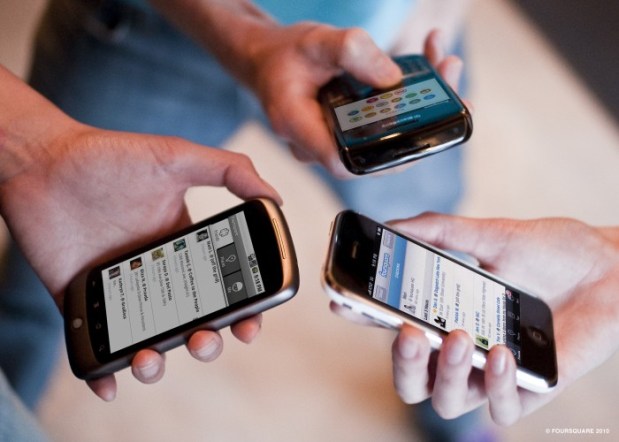PayPal’s Plans To Tip Mobile Payments

Consumers like their mobile devices and they increasingly like shopping on them. But merchants wish more of that activity happened inside their own mobile apps. That’s exactly the opportunity that PayPal’s One Touch payments brings to merchants, said Braintree CEO Bill Ready, by making it both easy and secure for consumers and merchants to use. Ready gave MPD CEO Karen Webster the inside skinny on why PayPal brought “one touch payments to the mobile app” and the impact he said it will have on delivering more sales to merchants.
The mobile app is the place that merchants and consumers can create a relationship – a walled garden, if you will, where retailers want to make it easy for a shopper to buy – and more often. It’s also, logically, where shoppers want to conduct business with their favorite brands, which is they downloaded the chain’s app in the first place.
With the release of One Touch last week, PayPal is creating an environment where both shoppers and retailers excellent reasons to focus their digital commerce efforts on mobile devices. One Touch leverages PayPal’s acquisition of Braintree and its Venmo platform and takes about 10 minutes for a merchant to enable.
The basic idea behind One Touch is to make the mobile transaction simpler—users (with the PayPal app installed on their phone) attempt a purchase through a retailer’s native app. The first time the service is used, the PayPal app is triggered and users must authorize the purchase. Going forward, any future use of the app allows payment to happen in just a single click.
“You have half of all e-commerce shopping sessions coming from mobile devices yet only around 10 to 15 percent of e-commerce purchases come from mobile devices. And I think the reason for that is absence of a properly mobile optimized buying experience, so people fall off in droves,” Ready said. “We’ve done case studies on people that have implemented One Touch buying with us and have completely bridged that conversion gap. I think every e-commerce CEO in the country is thinking about this issue, which is how to shift the consumer engagement that used to happen on the web to the mobile.”
PayPal’s One Touch interface addresses the ease of use concerns, as shoppers don’t have to enter card numbers, switch screens (after the first use) or even remember one of dozens of passwords that everyone is strongly advised to create for each of their digital accounts to protect against cyberthieves.
However, while consumers undeniably like ease of use, 2014 has been the year of the cyberheist and users may well question if their data is really secure enough if they don’t have to enter a password, a code number or offer up a full DNA scan of some kind.
One Touch seeks to bridge the security gap with real-time data. Ready commented that while there are many very secure approaches—EMV or 3D secure, for example—those measures can mean costly upgrades for merchants or friction for customers who used to doing nothing more complicated than swiping a card and signing their names.
Moreover, the banks’ method of guaranteeing card security—turning off cards used suspiciously after a bad purchase or two are noticed –can cause massive headaches for card holders who can find themselves trying to buy something after their card that has been—unbeknownst to the shopper—deactivated.
One Touch can do better, argued Ready. Consumer data is still hidden behind a wall—the merchant never actually sees it—and with the plethora of retailer attacks, that might well be a good thing. Further, because of PayPal’s ability to track purchases in real time, suspicious activity can trigger additional security measures during a transaction.
“Because of the inherent attributes of the mobile device, we can make a One Touch buying experience as frictionless for the consumer as swiping a card is today in store. But when we start to notice odd behavior, something that we think is unusual activity, rather putting a hold on the consumer’s account so they can give us a call later on to get it turned back on, we can instead interject something into the middle of that buying session. We can ask for information that would be quite easy for the legitimate user to know but quite hard for a fraudster to know.”
One Touch is a mobile-only service right now—users attempting to purchase things with a desktop through a website will still be using the standard way to pay with PayPal. Webster asked Ready whether PayPal had any qualms about, in essence, creating two very distinct payment experiences – one via the Web ( which still might be accessed by a mobile device) or a desktop that requires a password and one for mobile apps that does not. Ready said that consumers are likely okay with this because the expectation is that the mobile and desktop web experiences are different and will continue to evolve differently.
Although developing the product for a website-based audience is on the future road-map, Ready said that the smarter move is to initially build out the infrastructure that makes mobile based e-commerce possible and useful. When purchases are made on devices, they are usually made in a dedicated app. That happens more than 80 percent of the time, he said. However, the work is just beginning, as the world’s major retail players are just now coming around to building the commerce supporting apps of the future.
One Touch launched in beta last week.
